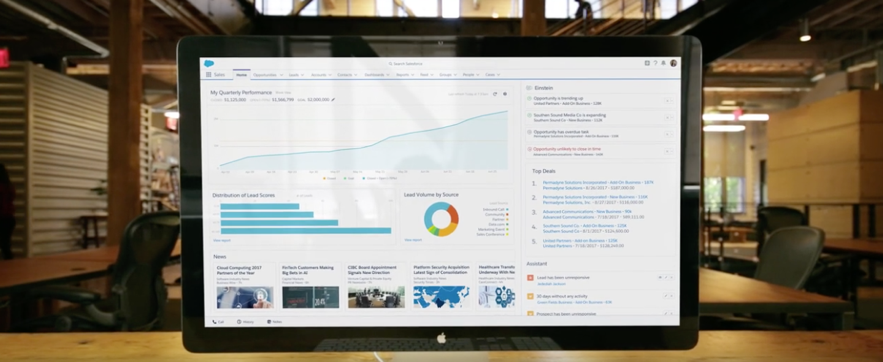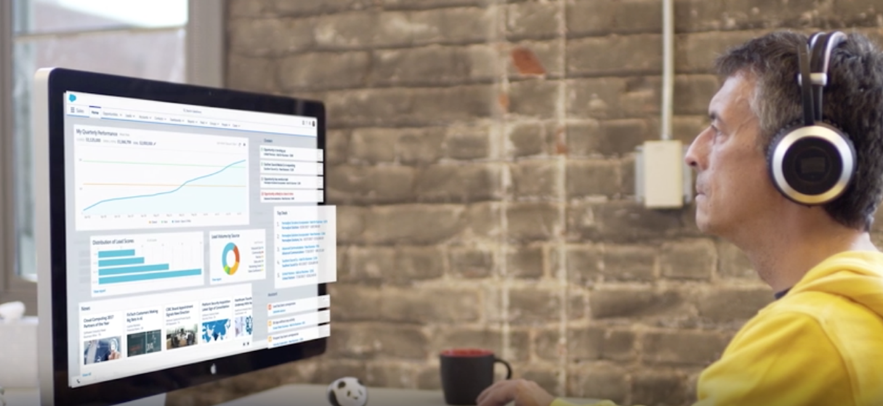Does your company still work with Salesforce Classic? Are you wondering if you should migrate to Lightning? We live in a world where change is the only constant and evolution is a must.
14 Oct 2020
This is especially true when it comes to innovative software solutions, like Salesforce.
Salesforce Classic is still one of the world’s top cloud-based CRM solutions and numerous success stories confirm its ability to produce solid client relationships, boost productivity and maximise ROI. However, the industry now holds its successor, Salesforce Lightning, as the new standard of excellence.

Launched four years ago, Lightning offers an even more fine-tuned user experience than its predecessor, since it allows for greater user and administrator productivity. A simple, modern and intuitive interface makes navigating through the platform easy, and its framework makes it simpler than ever to tweak and customise the interface, with ready-made apps and components that make virtually anything you may dream of a reality.
Does that sound like something your business might be interested in? Keep reading this post to learn how you can benefit from using this cutting-edge technology and what steps you must take to complete your migration from Classic to Lightning.
Advantages of Salesforce lightning
Countless companies have used salesforce Classic throughout the years, and still do to this day. So, why change a winning team?
Firstly, Salesforce Classic users do not have access to new releases, meaning you won’t have any new features. Secondly, the increase in productivity is significant, with users reporting an increase of over 40% in productivity, conversion rates and collaboration within their teams. On top of it all, you will be able to integrate third-party apps, easily making detailed customisations.
Not convinced yet? Wait until you see how flexible, convenient and easy it is to navigate the platform, particularly with regards to the customer journey. It doesn’t matter if you’re an internal user, a customer or a partner, or even part of a community, Salesforce Lightning is intuitive whether you are an administrator or an executive user: Lightning runs smoother for everyone.

Three main steps with regards to the migration from the Salesforce Classic to Salesforce Lightning
1. Discovery process – First, you must become familiar with Salesforce Lightning, from a platform ecosystem perspective through to the user experience it offers. Ask yourself: What benefits justify the move to Lightning?
Focus on what the value is, in terms that are specific only to your organisation. Tailor benefit analysis to your audience and do it for each department.
Once you’ve done the initial review, evaluate what the business priorities are and what the strategy is. Once a decision has been made to migrate to Lightning, you have the option to roll out to all users or to phase the migration by selecting a subset of users initially. There is also the option for users to flip back to Classic when required, however this should only be a temporary approach as users become more familiar with Salesforce Lightning. A cutoff point for the all users to completely migrate needs to be part of the rollout strategy.
Remember when your company changed from working with a BlackBerry to an iPhone? Maybe some stakeholders and executives were reluctant at first, which made it important to work with them to ensure that the move was embraced by all staff. The parallels are similar with the migration from Classic to Lightning – you will need to make sure stakeholders drive this change from the top down, but more carrot than stick is usually the preferred approach!
2. Roll out – It is time to share with users the exciting changes that come with the migration from Classic to Lightning. Let them know that this is an improvement – it’s important that users have some input into the changes, after all, they are the ones who will need to work with the end result! A collaborative approach will ensure that they not only adopt the change, but also embrace it.
Demonstrate the enhanced features that Lightning has and explain how they will improve productivity, boosting the business as a whole. Highlight the subtle differences between Classic and Lightning, for these need to be taken into consideration in terms of user experience.

3. Implementation – You’re all set to launch the Lightning experience to your users, be it the partial or whole Salesforce user base. You should consider the following advice:
- Listen to the feedback the users have and address any business or technical concerns that may arise to foster improved performance.
- Ask yourself: are we continuing to deliver what the users need? Salesforce Lightning is an intuitive solution which can easily be tweaked to accommodate user ideas and changes.
- Monitor and measure user activity and determining the increase in productivity directly related to the migration.
- Set measurable goals to measure business improvement.
- Make sure you’re benefiting from making use of the great additional functionalities that Lightning offers.
- Motivate users to fully embrace the Salesforce Lightning. You can do so by introducing Lightning whilst allowing them to switch back to Classic mode on certain screens for one or two-months. This way, users get accustomed to the interface and are not so shocked when the irreversible change is finally made.
- When it comes to migrations, the sooner, the better – try to make the whole process as short as possible.

Are there disadvantages?
Salesforce Classic is an excellent interface, but it is not an evolving one. If you decide to stay with Classic, you will not benefit from additional features and functions – it’s the present and the future.
But if you do decide to make the upgrade, there are a few things you should think about beforehand:
- It is important to account for the initial learning curve and its productivity impact in the short-term.
- To minimise the learning period, you should not only have formal training, but also a support team that assists users in the months post migration.
- Salesforce administrators will also have a learning curve as they become accustomed with Lightning, and how best to take advantage of the applicable enhancements. The benefit of engaging a Salesforce Platinum Consulting Partner like VASS, is that we have the experience, expertise and methodology to guide organisations to a successful migration, and importantly, set a path to ensure that our customers continue to leverage and exploit the Platform.
- As with any project, it is important to secure the buy-in from all the stakeholders, have an executable plan with timelines, roles and responsibilities.
In conclusion, the benefits of Lightning vastly outweigh the downside. Can you imagine what your teams, customers and partners could achieve if they benefited from a truly uniform, seamless experience across devices and operating systems? Go ahead and light up your business with Salesforce Lightning.

From our perspective
VASS offers optimised processes using our acquired knowledge in migration, ensuring the process is completed quickly and correctly, take full advantage of Salesforce Lightning to monitor and improve business performance. Our experience ensures that we know the potential pitfalls organisations typically encounter when they start migrating from Lightning, and we make sure we avoid them.
Our process when it comes to migration is structured enough that it gives you and your company a sense of clarity, whilst remaining flexible to accommodate your requirements. We like to make sure you’re getting the most out of Lightning, that’s why we make sure you leverage the features and functions within the platform.
We take pride in being experts in assisting companies in this process. Our experience, expertise, learnings and thought leadership ensure our customers have a successful migration that doesn’t leave any stakeholder or executive behind but rather continuously drive business improvements through the configuration of Salesforce Lightning to meet and exceed your business objectives.
Sales Director


 Facebook
Facebook
 X
X
 Linkedin
Linkedin